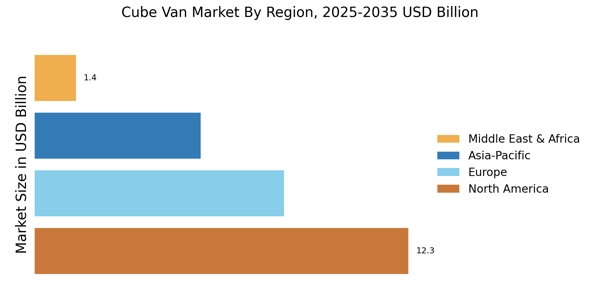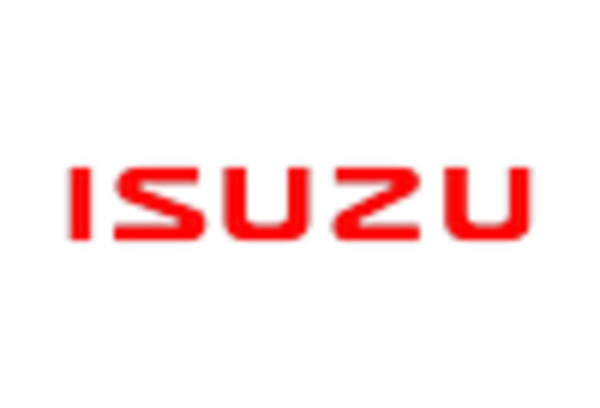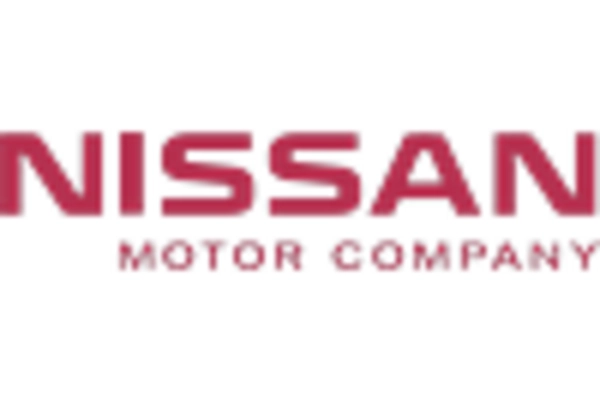Urbanization Trends
Urbanization is a significant driver for the Cube Van Market, as more people migrate to urban areas, leading to increased demand for transportation services. The growing population in cities necessitates efficient logistics solutions for businesses, particularly in the retail and service sectors. Cube vans are ideal for navigating congested urban streets and delivering goods to various locations. Data indicates that urban areas are expected to account for over 60% of the global population by 2030, which may lead to a corresponding rise in the need for cube vans. This urban-centric demand could potentially enhance the market's growth prospects.
Rising E-commerce Demand
The Cube Van Market is experiencing a notable surge due to the increasing demand for e-commerce services. As online shopping continues to gain traction, businesses require efficient logistics solutions to deliver products to consumers. Cube vans, with their spacious interiors and versatility, are well-suited for transporting goods in urban environments. According to recent data, the e-commerce sector has seen a growth rate of approximately 15% annually, which directly influences the Cube Van Market. This trend suggests that logistics companies are likely to invest in more cube vans to meet the rising delivery demands, thereby driving the market forward.
Technological Innovations in Logistics
Technological advancements are reshaping the Cube Van Market, as innovations in logistics and transportation management systems enhance operational efficiency. The integration of telematics, route optimization software, and real-time tracking systems allows businesses to streamline their delivery processes. These technologies not only improve service quality but also reduce operational costs. As logistics companies increasingly adopt these technologies, the demand for modern cube vans equipped with advanced features is likely to rise. This trend indicates a potential shift in consumer preferences towards more technologically advanced vehicles in the Cube Van Market.
Regulatory Support for Green Initiatives
The Cube Van Market is likely to benefit from increasing regulatory support for green initiatives. Governments worldwide are implementing stricter emissions regulations and promoting the use of environmentally friendly vehicles. Cube vans, particularly those equipped with alternative fuel technologies, align well with these initiatives. The market for electric and hybrid cube vans is projected to grow significantly, as businesses seek to comply with regulations while reducing their carbon footprint. This shift towards sustainable transportation solutions may create new opportunities for manufacturers and service providers within the Cube Van Market.
Increased Demand for Last-Mile Delivery Solutions
The Cube Van Market is witnessing a growing demand for last-mile delivery solutions, driven by the need for efficient and timely deliveries in urban settings. As consumers expect faster delivery times, businesses are compelled to optimize their logistics operations. Cube vans, with their ability to navigate narrow streets and deliver goods directly to customers, are becoming a preferred choice for last-mile logistics. Market analysis suggests that the last-mile delivery segment is expected to grow at a rate of 20% annually, indicating a robust opportunity for cube van manufacturers and service providers to capitalize on this trend.


















Leave a Comment